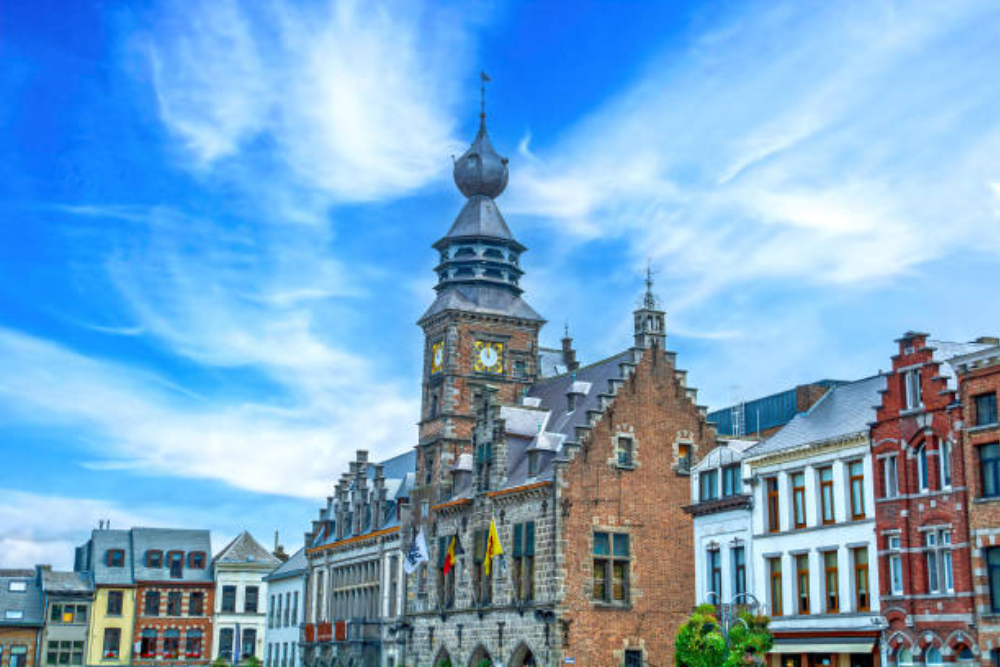Introduction
Binche, Belgium is a small, historic town in the Walloon region of Belgium, known for its rich cultural heritage and medieval charm. It is most famous for its UNESCO-listed Carnival of Binche, a traditional festival featuring the iconic Gilles—local men dressed in colorful costumes, masks, and feathered hats who parade through the streets throwing oranges to the crowd as a symbol of good luck. The town is home to well-preserved medieval architecture, quaint cobblestone streets, and historical landmarks like the Binche Belfry, part of the UNESCO World Heritage Sites of Belfries of Belgium and France. Visitors can also explore the International Carnival and Mask Museum, which showcases masks and carnival traditions from around the world.
Binche Belfry
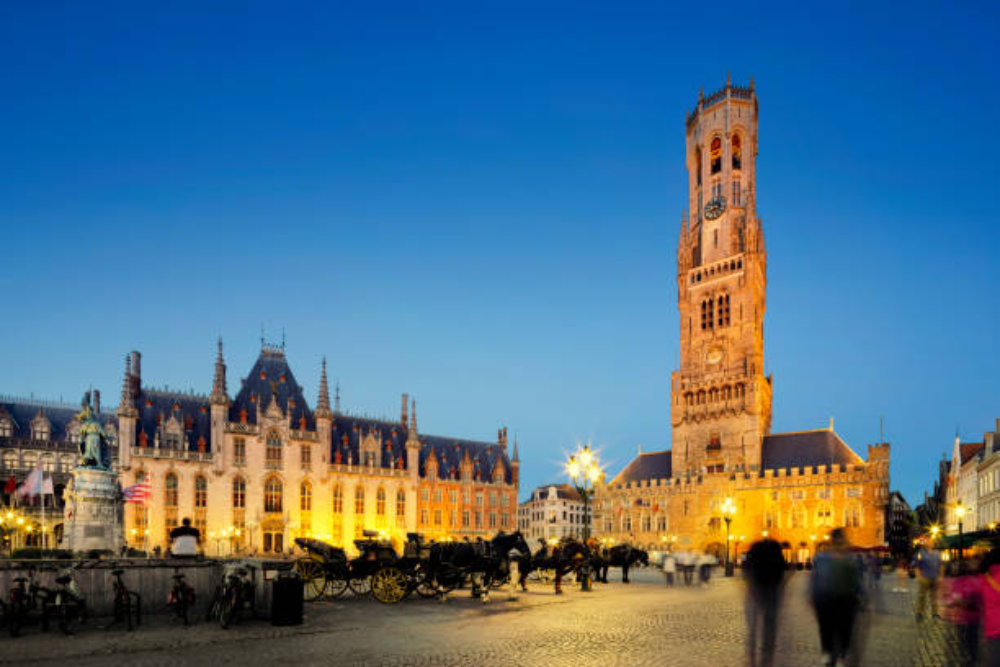
- The Binche Belfry is a prominent landmark and a UNESCO World Heritage Site. Built in the 14th century, this medieval structure stands as a symbol of the town’s historical significance. The belfry offers panoramic views of Binche and its surroundings. Its bells have long been used to mark important events in the town’s history.
Grand Place (Main Square)
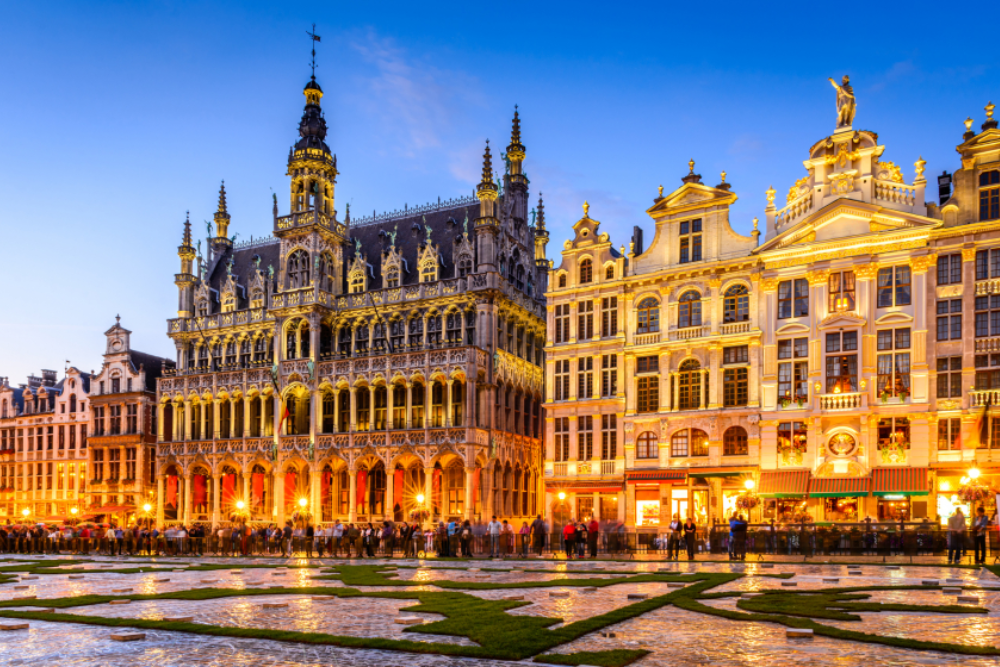
- The Grand Place is the heart of Binche, where locals and tourists gather for events, including the famous Binche Carnival. Lined with beautiful old houses, shops, and cafes, it is the perfect spot to soak in the town’s charm. During the carnival, it transforms into a vibrant space filled with music, parades, and festive activities.
International Carnival and Mask Museum
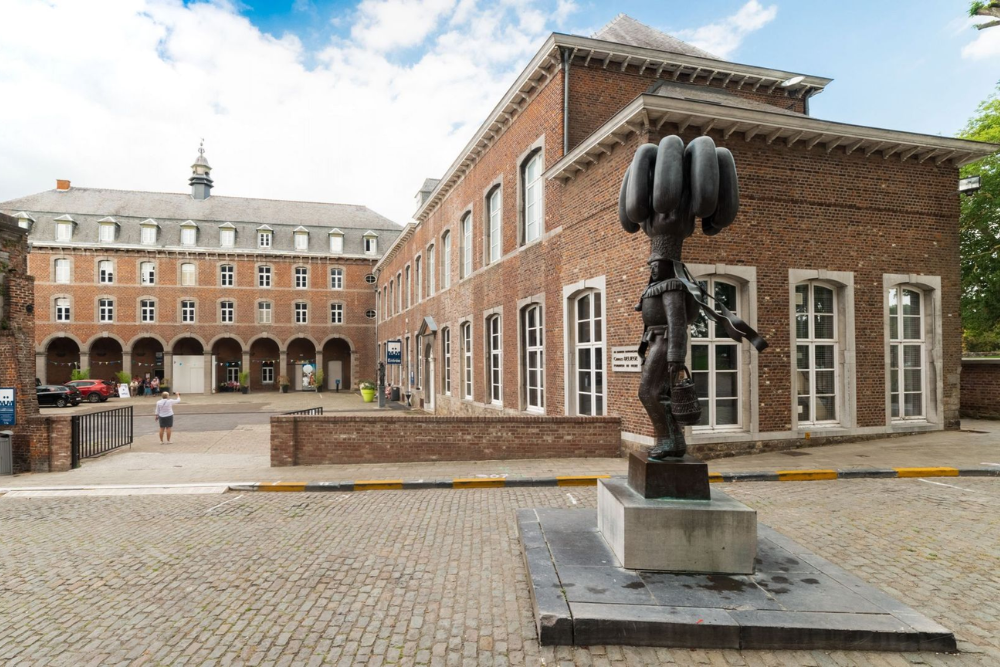
- This museum is one of Binche’s most important cultural attractions. It showcases the history and significance of carnival traditions, not only in Binche but also around the world. The museum features a vast collection of masks, costumes, and artifacts, offering visitors insight into the global practice of masquerade and the local folklore of the Gilles of Binche.
Eglise Saint-Ursmer (Church of Saint Ursmer)
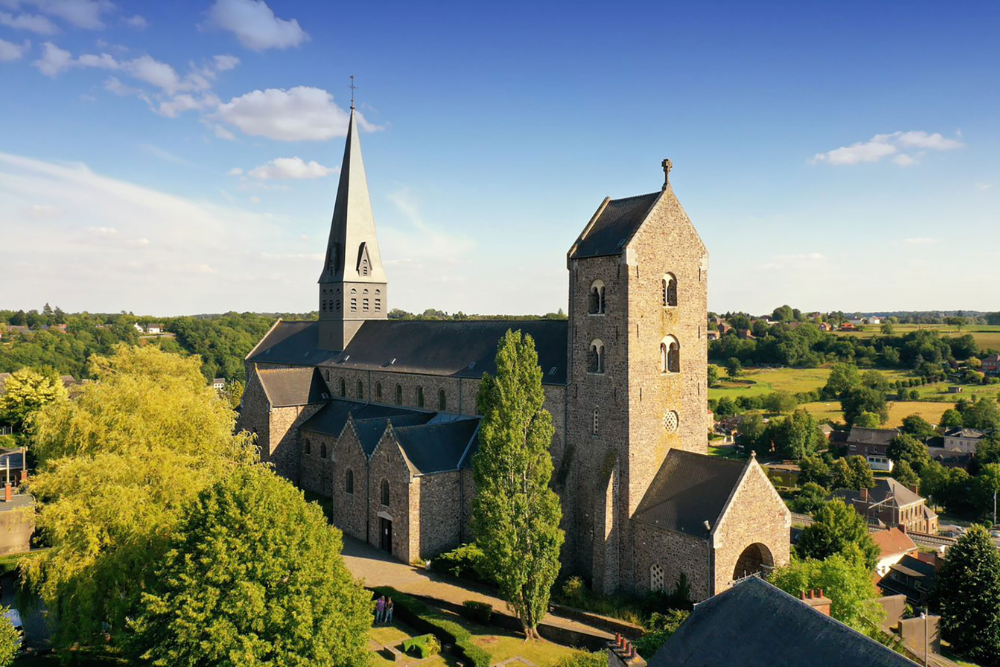
- This beautiful Gothic-style church, built in the 13th century, is known for its intricate stonework and stunning stained-glass windows. It is one of the most peaceful spots in the town and provides a glimpse into the religious and architectural heritage of Binche. The church’s interior is filled with sacred art and historical relics.
Binche City Walls (Remparts de Binche)
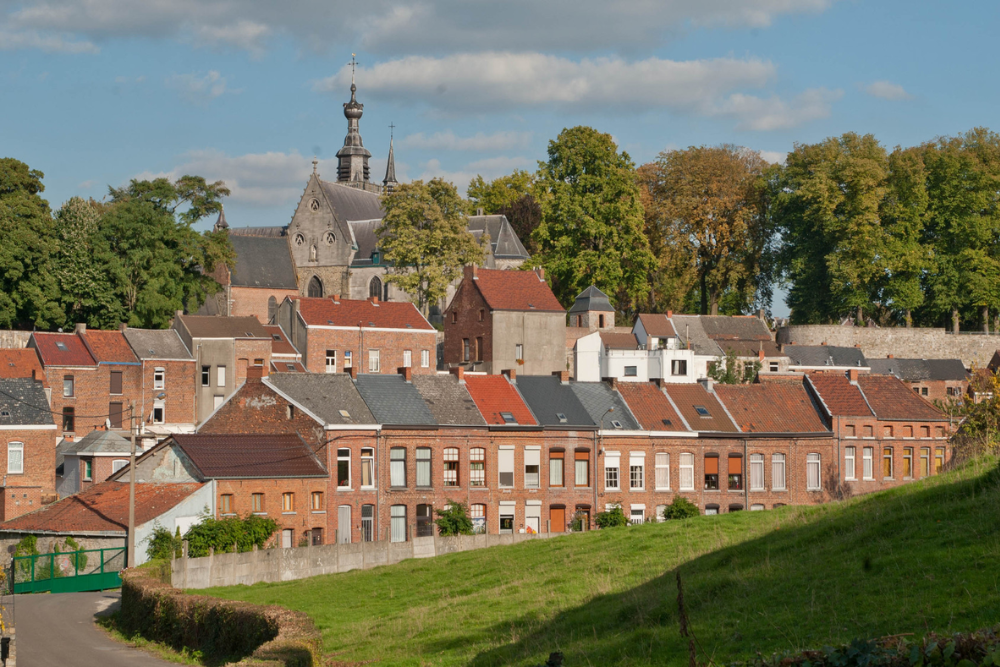
- Binche is one of the few Belgian towns with well-preserved medieval city walls. These ancient fortifications were built to protect the town from invaders and are now an iconic symbol of its history. Visitors can walk along the remnants of the walls and imagine the town as it was during the Middle Ages. Some of the original towers still stand today.
Gilles Carnival Experience (Cultural Adventure)
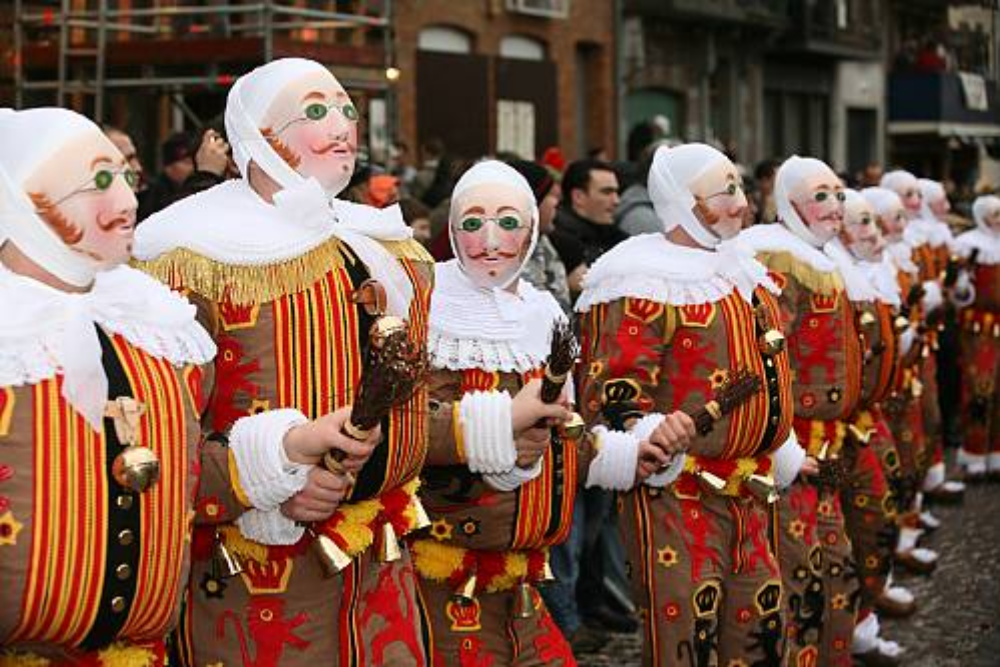
- Taking part in the Binche Carnival is a once-in-a-lifetime adventure. Tourists can immerse themselves in the festival, dress in traditional costumes, and witness the spectacular parades. The highlight of the event is the moment the Gilles throw oranges into the crowd, which symbolizes luck and prosperity. The energetic dances, rhythmic drumming, and colorful costumes make it an unforgettable cultural adventure.
Cycling Tours in the Binche Countryside
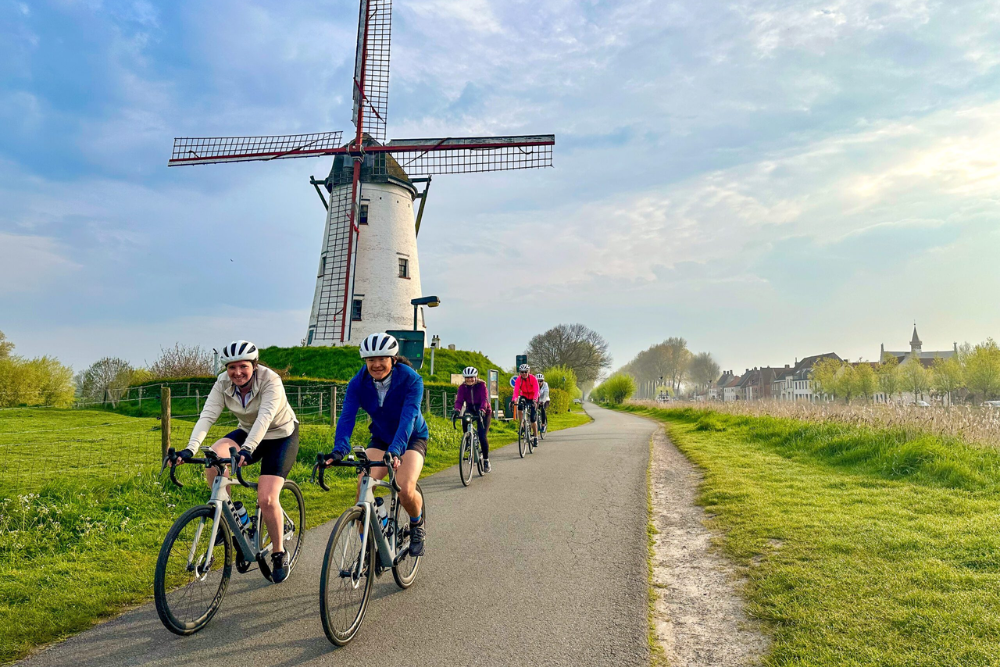
- For adventure lovers who enjoy the outdoors, cycling tours are a fantastic way to explore the scenic countryside around Binche. The area offers rolling hills, picturesque farmlands, and quiet country roads. Cyclists can follow trails that pass through lush forests, quaint villages, and peaceful landscapes, offering an off-the-beaten-path adventure.
Street Art Adventure (Urban Exploration)

- Binche is home to a growing scene of street art and murals, which adventurous tourists can seek out on foot. The town’s walls are decorated with vivid artistic expressions that tell stories about local life and culture. Urban explorers can wander through side streets, alleyways, and underpasses in search of colorful artwork, creating a modern twist on a cultural adventure.
Dos and Don’ts in Binche, Belgium
Dos
- Do Experience the Binche Carnival
- Attend the world-famous Binche Carnival, a UNESCO-recognized event held every year before Lent. It’s a vibrant, joyful celebration filled with music, parades, and the unique spectacle of the Gilles throwing oranges into the crowd.
- Wear comfortable clothing and arrive early to secure a good viewing spot for the parade.
- Do Respect the Gilles Tradition
- The Gilles costumes, masks, and hats are sacred and culturally significant to the locals. Avoid touching their costumes or masks unless invited.
- Cheer and participate respectfully in the tradition of catching oranges thrown by the Gilles, as it symbolizes good luck.
- Do Visit the International Carnival and Mask Museum
- Learn about the history and folklore behind the Binche Carnival and the use of masks around the world. It’s an excellent way to understand the town’s rich cultural heritage.
- Take a guided tour for a more immersive experience and deeper knowledge of the exhibits.
Don’ts
- Don’t Disrespect the Gilles or Their Role
- Avoid mocking, touching, or interfering with the Gilles during the carnival. They hold a unique and respected position in the local culture.
- Don’t throw back the oranges! It may seem playful, but it’s seen as disrespectful. The oranges are a symbol of luck, not a plaything.
- Don’t Arrive Late for the Carnival
- The streets fill up quickly during the Binche Carnival, so don’t show up late if you want a good spot to watch the parade.
- Some areas may be crowded, so plan to arrive early to secure a viewing location.
- Don’t Climb Restricted Areas of the City Walls
- While exploring the medieval walls, avoid climbing on restricted sections, as some parts may be fragile or unsafe. Follow signs and instructions for safety.
- Don’t ignore safety guidelines, especially when walking on uneven or elevated sections of the wall.
Best time to reach in Binche
1. For the Binche Carnival (February or March)
- 3 days before Shrove Tuesday (Mardi Gras), which usually falls in February or early March.
- The Carnival of Binche is a UNESCO-recognized event that features the famous Gilles parades, traditional drumming, and the symbolic orange-throwing ritual. It’s a unique cultural experience and the town’s most popular event.
- Festivities, large crowds, street parades, and high-energy celebrations. The Gilles wear elaborate costumes, and the entire town becomes a hub of music and dance.
- Arrive a day or two before the event to secure good accommodation and get familiar with the parade routes.
- It can be crowded, and accommodation prices may be higher.
2. For Pleasant Weather (April to October)
- April to October (Spring, Summer, and Early Autumn)
- The weather is mild and pleasant, perfect for walking tours, exploring the Binche Belfry, and strolling along the medieval city walls.
- Warmer temperatures, sunny days, and more comfortable conditions for sightseeing and outdoor activities like cycling and hiking. You can also avoid the large crowds that come with the Carnival season.
- If you want to avoid tourist crowds but still enjoy pleasant weather, visit during May, June, or September.
- You won’t experience the Carnival, but you can still visit the International Carnival and Mask Museum to learn about it.
3. For a Budget-Friendly Visit (November to January)
- November to January (Low season)
- Prices for hotels and accommodations are generally lower, and tourist crowds are minimal.
- Cooler weather and fewer tourists, making it ideal for a peaceful, off-the-beaten-path experience. You can explore the Belfry, city walls, and local cafes at a slower pace.
- Pack warm clothes as it can get quite cold, especially in December and January.
- Outdoor activities like cycling and hiking might be less enjoyable due to colder weather.



